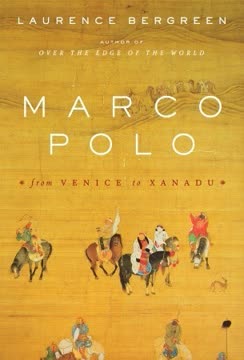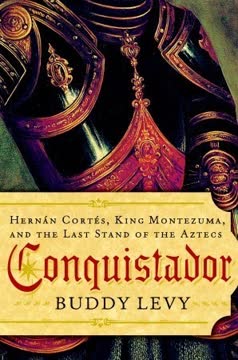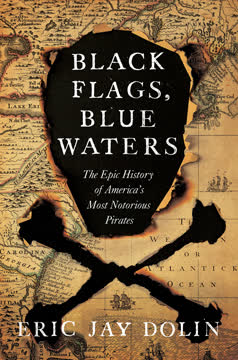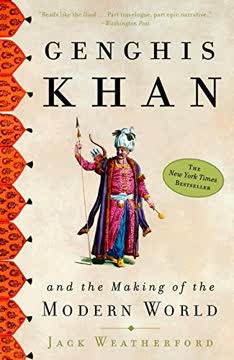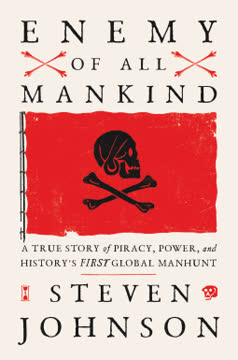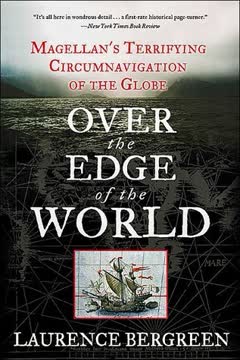Key Takeaways
1. Venice: A Thriving Hub of Commerce and Culture
Venetian trade was synonymous with globalization—another embryonic concept of the era.
Global Outlook. In the 13th century, Venice was a major center of commerce and culture, a city-state that lived by trade and had a global outlook. Its economy thrived thanks to its aggressive navy, which defended the city from rivals. Unlike other medieval cities, Venice had no walls or gates, as the lagoon and swamps protected it from invaders.
Merchant Aristocracy. Venice gave rise to a sophisticated merchant aristocracy, including the Polo family, known for frequent journeys to the East in search of jewels, silks, and spices. The city was highly structured, fiercely independent, and commercial, based on a unique combination of feudal obligation and global outlook.
Advanced Business Practices. Venetians developed a reputation for efficient and thorough business administration, the most advanced in Europe. They adapted Roman contracts to the needs of merchants trading with the East, and developed the most advanced banking system in Western Europe. This allowed for complex ventures involving immense outlay, several years' duration, and considerable risk to be arranged quickly.
2. The Polos' Journey East: From Merchants to Ambassadors
The Mongols and Venetians had both made the world “flat,” the Venetians traveling over water with their ships, and the Mongols over land by reviving the Silk Road.
Unexpected Opportunity. Niccolò and Maffeo Polo embarked on a trading journey to the East, eventually encountering an ambassador from Kublai Khan, who invited them to meet the Great Khan. This chance encounter transformed them from merchants into emissaries.
Kublai Khan's Curiosity. Kublai Khan, eager to learn about the West, questioned the Polo brothers extensively about European rulers, customs, and religious beliefs. Impressed by their knowledge and language skills, he entrusted them with a mission to the Pope.
The Golden Passport. Kublai Khan provided the Polos with a paiza, a golden tablet that guaranteed safe passage and respect throughout the Mongol Empire. This allowed them to travel freely and receive assistance from local rulers, paving the way for future trade and diplomatic relations.
3. Young Marco's Transformation on the Silk Road
The world was startlingly modern in another way: it was “flat,” that is to say, globally connected across boundaries and borders, both natural and artificial.
Early Hardships. Marco Polo, as a young man, accompanied his father and uncle on their second journey to the East, facing numerous hardships and dangers along the Silk Road. These challenges tested his resilience and shaped his character.
Cultural Immersion. As they traveled, Marco learned different languages, customs, and religions, adapting to the Mongol way of life and developing a keen understanding of Asian cultures. This immersion broadened his perspective and prepared him for his future role in Kublai Khan's court.
Developing Skills. Marco's experiences on the road honed his skills in observation, diplomacy, and storytelling. He learned to appreciate the beauty and diversity of the world, and to connect with people from different backgrounds. These skills would prove invaluable in his service to Kublai Khan.
4. Kublai Khan: The Alluring and Complex Mongol Emperor
Kublai was not a barbarian,” Venetian historian Alvise Zorzi observes. Rather, he was “a monarch pursuing high standards of governance, dedicated to learning and implementing the most efficient means to that end.
Enlightened Ruler. Kublai Khan was portrayed not as a barbarian, but as an enlightened monarch pursuing high standards of governance and seeking better ways to rule. He valued learning and sought to implement the most efficient means to achieve his goals.
Religious Tolerance. Kublai Khan displayed a remarkable degree of religious tolerance, allowing people of different faiths to practice their beliefs freely within his empire. This policy fostered stability and attracted talented individuals from diverse backgrounds to his court.
Patron of the Arts and Sciences. Kublai Khan was a patron of the arts and sciences, supporting the development of new technologies, promoting cultural exchange, and commissioning ambitious building projects. His court became a center of innovation and learning, attracting scholars and artists from across Asia and Europe.
5. Mongol Culture: A Blend of Savagery and Sophistication
These Mongols do not care what God is worshipped in their lands,” he exclaims. “If only all are faithful to the lord Khan and quite obedient and give therefore the appointed tribute, and justice is well kept, thou mayest do what pleaseth thee with the soul.
Warrior Ethos. The Mongols were renowned for their military prowess, horsemanship, and discipline. Their armies were highly organized and effective, conquering vast territories and establishing a powerful empire.
Nomadic Lifestyle. The Mongols maintained a nomadic lifestyle, living in portable gers (felt tents) and relying on their herds for sustenance. This way of life fostered resilience, adaptability, and a strong connection to nature.
Religious Syncretism. The Mongols practiced a form of shamanism that incorporated elements of various religions, including Buddhism, Christianity, and Islam. This syncretic approach reflected their openness to different cultures and their pragmatic approach to governance.
6. China's Wonders: A Land of Innovation and Excess
The trade and profit of the city / Consisteth of all nations.
Advanced Technology. China boasted advanced technologies such as paper money, the printing press, and sophisticated irrigation systems, which impressed Marco and contributed to the empire's wealth and prosperity. These innovations were largely unknown in Europe at the time.
Opulent Cities. Chinese cities like Cambulac (Beijing) and Quinsai (Hangzhou) were renowned for their grandeur, beauty, and bustling commerce. Marco marveled at their elaborate palaces, bustling markets, and sophisticated infrastructure.
Cultural Refinement. Despite the Mongol conquest, Chinese culture continued to flourish, with advancements in art, literature, and philosophy. Marco observed the Chinese people's love of beauty, their refined manners, and their devotion to learning.
7. India's Mystique: A Land of Contrasts and Spiritual Depths
Jerusalem was considered “the navel of the world.” Entrances to Heaven and Hell existed, somewhere.
Spiritual Traditions. India was portrayed as a land of diverse spiritual traditions, including Hinduism, Buddhism, and Jainism. Marco observed the practices of yogis, ascetics, and other religious figures, and he was intrigued by their devotion and self-discipline.
Exotic Wildlife. India was home to a variety of exotic animals, including elephants, rhinoceroses, and peacocks, which fascinated Marco and added to the region's mystique. He also encountered strange and terrifying creatures, such as giant snakes and venomous spiders.
Commercial Hub. India was a major center of trade, attracting merchants from across Asia and Europe. Marco observed the bustling markets, the exchange of valuable goods, and the sophisticated financial systems that supported this commerce.
8. The Perils of the Sea: Pirates, Storms, and Shipwrecks
Their ships are very bad, and many of them founder, because they are not fastened with iron nails but stitched together with thread made of coconut husks.
Maritime Dangers. Sea voyages were fraught with peril, including pirates, storms, and shipwrecks. Marco witnessed firsthand the dangers faced by merchants and sailors as they navigated the treacherous waters of the Indian Ocean.
Pirate Tactics. Pirates employed various tactics to capture merchant ships, including ambushes, disguises, and the use of drugs to incapacitate their victims. They were often ruthless and cruel, torturing or killing those who resisted.
Shipbuilding Techniques. Marco described the shipbuilding techniques used in Asia, noting the use of coconut fiber and fish oil instead of iron nails and pitch. He expressed skepticism about the seaworthiness of these vessels, but he also acknowledged their ingenuity and adaptability.
9. The Long Road Home: Loss, Redemption, and Legacy
I believe our return was the pleasure of God,” he concludes, “that the things that are in the world might be known.
Return to Venice. After seventeen years in the service of Kublai Khan, Marco and his family finally obtained permission to return to Venice, escorting a Mongol princess to her new husband in Persia. The journey home was long and arduous, marked by storms, shipwrecks, and the loss of many companions.
Imprisonment in Genoa. Upon their return to Venice, Marco became embroiled in a war with Genoa and was captured and imprisoned. It was during this time that he dictated his memoirs to Rustichello of Pisa, a fellow prisoner.
Enduring Legacy. Marco Polo's "Travels" became one of the most influential books in history, inspiring explorers, merchants, and adventurers for centuries to come. His account provided Europeans with their first glimpse of the wonders of Asia, and it helped to shape their understanding of the world.
Last updated:
FAQ
1. What is Marco Polo: From Venice to Xanadu by Laurence Bergreen about?
- Epic journey and biography: The book chronicles Marco Polo’s life and his legendary travels from Venice to the Mongol Empire, focusing on his experiences at Kublai Khan’s court and explorations across Asia, India, and Africa.
- Historical and cultural exploration: Laurence Bergreen blends historical research with vivid storytelling, providing insights into the cultures, customs, and political landscapes of the 13th-century world.
- Personal and global impact: The narrative highlights Polo’s role as a cultural bridge between East and West, his service to Kublai Khan, and the legacy of his Travels in shaping European perceptions of Asia.
- Three-part structure: The book is organized into sections covering Polo’s origins in Venice, his journey through Asia, and his experiences in the Mongol Empire and beyond.
2. Why should I read Marco Polo: From Venice to Xanadu by Laurence Bergreen?
- Rich historical context: The book offers a detailed and nuanced portrayal of the Silk Road, the Mongol Empire, and the interconnectedness of Eurasian societies in the 13th century.
- Engaging storytelling: Bergreen combines scholarly research with compelling narrative, making complex history accessible and vivid through anecdotes and character studies.
- Cultural and personal insights: Readers gain a deeper understanding of medieval trade, diplomacy, religion, and the personal transformation of Marco Polo.
- Exploration of legacy: The book examines the authenticity, impact, and controversies surrounding Polo’s accounts, making it relevant for those interested in history, travel, and cultural exchange.
3. What are the key takeaways and themes from Marco Polo: From Venice to Xanadu by Laurence Bergreen?
- Cultural exchange and adaptation: The book illustrates how the Silk Road facilitated the blending of customs, languages, and religions between East and West.
- Complexity of medieval travel: Polo’s journey was fraught with danger, delay, and uncertainty, revealing the resilience and adaptability required for exploration.
- Power of storytelling: Marco Polo’s Travels shaped Western perceptions of Asia, blending fact and legend, and highlighting the importance of narrative in cultural transmission.
- Human curiosity and resilience: The Polos’ perseverance and openness to new experiences exemplify the spirit of discovery and the challenges of cross-cultural encounters.
4. Who were the key historical figures in Marco Polo: From Venice to Xanadu by Laurence Bergreen?
- Marco Polo: Venetian merchant and traveler whose adventures form the core of the book, serving as a bridge between Europe and Asia.
- Niccolò and Maffeo Polo: Marco’s father and uncle, experienced merchants who first established contact with the Mongol Empire and paved the way for Marco’s journey.
- Kublai Khan: Grandson of Genghis Khan, ruler of the Mongol Empire, and Marco Polo’s patron, depicted as a complex and innovative leader.
- Other notable figures: Genghis Khan (founder of the Mongol Empire), Ahmad (powerful Muslim official at court), and Teobaldo of Piacenza (Pope Gregory X), who played roles in diplomacy and administration.
5. How does Laurence Bergreen describe Venice’s significance in Marco Polo’s story?
- Commercial powerhouse: Venice was a leading city-state and global trade hub, with a sophisticated merchant aristocracy including the Polo family.
- Unique governance and culture: The city was an oligarchy ruled by merchant families, with traditions like the doge’s “marriage to the sea” and reliance on its lagoon for defense.
- Advanced business practices: Venice pioneered banking, insurance, and complex trade contracts, enabling long-distance commerce and adventurous merchants.
- Political rivalry: Ongoing conflict with Genoa shaped the environment in which Marco Polo lived, influencing his later capture and imprisonment.
6. How did the Polo family first come into contact with the Mongol Empire, according to Laurence Bergreen?
- Initial trading expedition: Niccolò and Maffeo Polo left Venice in 1253, traveling through Constantinople and eventually reaching Mongol territories.
- Extended stay and adaptation: They spent years in places like Soldaia and Bukhara, learning Mongol languages and customs, and gaining the trust of local rulers.
- Introduction to Kublai Khan: Through diplomatic channels, they were brought to Kublai Khan’s court, where they were honored and tasked with missions.
- Role as intermediaries: Kublai Khan sent them as envoys to the pope, marking the start of their role as cultural and diplomatic intermediaries between East and West.
7. What was the “paiza” and why was it important in the Polo family’s travels, as explained by Laurence Bergreen?
- Definition and function: The paiza was a golden tablet or passport issued by Kublai Khan, granting safe passage and privileges throughout the Mongol Empire.
- Symbol of authority: It commanded local officials to provide lodging, horses, and escorts to the bearer, under penalty of disgrace.
- Facilitated travel: The paiza was crucial for the Polos’ safe and relatively unhindered movement across vast and often dangerous territories.
- Diplomatic significance: It represented Kublai Khan’s trust and official sanction, elevating the Polos to the status of imperial emissaries.
8. How does Laurence Bergreen portray Kublai Khan’s court and the Mongol Empire’s administration in Marco Polo: From Venice to Xanadu?
- Lavish and ritualized court: Kublai Khan’s court featured elaborate ceremonies, a formalized selection of concubines, and grand feasts with thousands of guests.
- Merit-based military and bureaucracy: The Mongol military promoted officers based on valor, and the administration combined Mongol traditions with Chinese bureaucratic sophistication.
- Efficient communication: The empire’s postal system allowed rapid transmission of information, with relay stations and fresh horses enabling messengers to travel up to 250 miles a day.
- Welfare and resource management: Kublai Khan managed grain reserves, provided alms, and granted tax exemptions during disasters, reflecting both pragmatism and superstition.
9. What role did Marco Polo play in the Mongol Empire, according to Laurence Bergreen?
- Emissary and administrator: Marco Polo served as an emissary and tax collector for Kublai Khan, traveling to administer taxes and gather information in distant provinces.
- Explorer and observer: He documented local customs, economies, and political situations, providing a unique European perspective on Asia.
- Court insider and outsider: While enjoying privileges, Polo remained aware of his dependence on the khan’s favor and witnessed court intrigues and political shifts.
- Cultural bridge: His role allowed him to observe and report on the empire’s diversity, contributing to his later accounts that introduced Asia to Europe.
10. How does Laurence Bergreen depict the cultural and social life in major cities like Cambulac (Beijing) and Quinsai (Hangzhou)?
- Cambulac’s grandeur and order: The Mongol capital was designed with massive walls, broad streets, and canals, symbolizing Mongol power and blending architectural styles.
- Scientific and cultural hub: Cambulac housed observatories, astrologers, and diverse religious communities, reflecting the empire’s cosmopolitan nature.
- Quinsai’s wealth and refinement: Hangzhou was described as the world’s greatest city, with thousands of bridges, bustling markets, and a vibrant cultural life including poetry, drama, and festivals.
- Social regulation: Both cities were heavily policed by Mongol guards, with curfews and strict regulations to maintain order and prevent rebellion.
11. What challenges and dangers did Marco Polo and his family face during their travels, as described by Laurence Bergreen?
- Harsh geography and climate: The Polos crossed deserts, high mountain passes, and endured monsoons, extreme heat, and cold, often facing delays and hardship.
- Hostile peoples and bandits: They encountered marauders, pirates, and hostile tribes, requiring negotiation and caution to survive.
- Health and logistical risks: Marco suffered illnesses, and the family faced limited resources, unreliable transportation, and the constant threat of political instability.
- Political intrigue: The decline of the Mongol Empire and shifting alliances complicated their journey, but their diplomatic skills and paizas provided crucial protection.
12. How does Laurence Bergreen address the authenticity and legacy of Marco Polo’s Travels in Marco Polo: From Venice to Xanadu?
- Controversies over veracity: Bergreen discusses skepticism about whether Polo reached China or embellished his accounts, presenting evidence from Chinese and Mongol sources supporting Polo’s presence.
- Literary collaboration: Polo’s narrative was shaped by his collaboration with Rustichello of Pisa, whose literary style and multiple manuscript versions influenced the text’s tone and consistency.
- Enduring influence: Despite doubts, Polo’s Travels became foundational for European knowledge of Asia, inspiring explorers and shaping cartography and literature.
- Cultural transmission: Bergreen emphasizes Polo’s role as a “culture carrier,” whose stories bridged continents and centuries, leaving a lasting legacy.
Review Summary
Marco Polo: From Venice to Xanadu is praised for its engaging narrative and historical context, offering insights into 13th-century Eurasia and Polo's adventures. Readers appreciate Bergreen's analysis of Polo's claims and the book's readability. Some find certain sections dry or overly detailed. The work is commended for its research and exploration of Polo's legacy. Critics note occasional speculation and attempts to justify Polo's accounts. Overall, it's considered a valuable resource for those interested in world history and exploration, despite some pacing issues.
Similar Books
Download PDF
Download EPUB
.epub digital book format is ideal for reading ebooks on phones, tablets, and e-readers.
